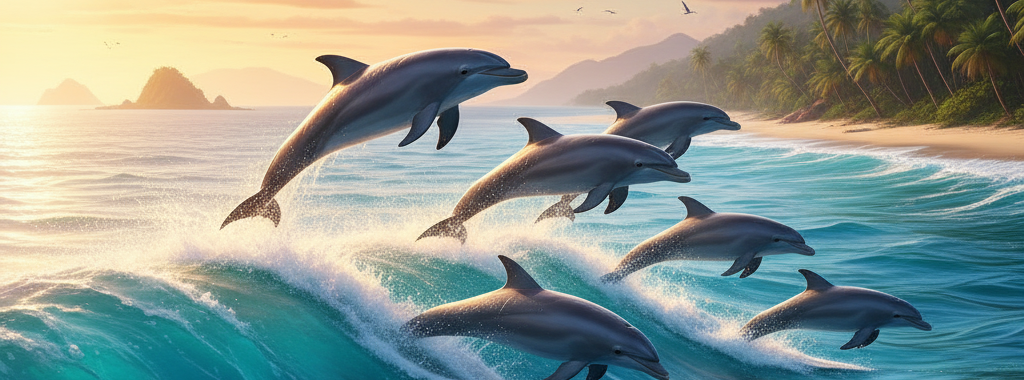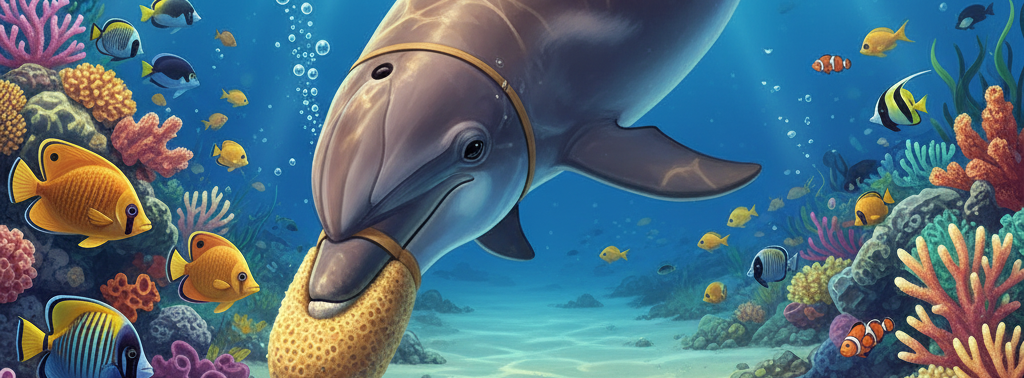Dolphins, charismatic marine mammals renowned for their acrobatic leaps and clicks, embody intelligence, social complexity, and adaptability in oceans worldwide. With about 90 species, from the bottlenose dolphin in coastal waters to the orca (technically a dolphin) in open seas, these cetaceans fascinate animal lovers and scientists alike. In the pets & animals category, while dolphins aren’t domestic pets due to their wild needs and legal protections, they inspire ethical wildlife tourism and conservation, reminding us of the bonds possible between humans and animals through responsible interactions like sanctuary visits or research support.

Evolutionary Traits and Aquatic Adaptations
Dolphins evolved from land mammals around 50 million years ago, returning to the sea with streamlined bodies, dorsal fins, and blowholes for efficient breathing. Their echolocation—emitting clicks and interpreting echoes—allows navigation, hunting, and communication in murky waters, detecting objects up to 100 meters away. Species like the common dolphin thrive in warm tropical seas, while others, like the vaquita in the Gulf of California, face critically endangered status.
Physically, dolphins have conical teeth for catching fish and squid, and their skin sheds rapidly to reduce drag, enabling speeds over 55 km/h. Their large brains—second only to humans in encephalization quotient—support problem-solving, tool use (e.g., sponges as nose guards while foraging), and self-recognition in mirrors, traits once thought unique to primates.
Social Structures and Behavioral Insights
Dolphins live in fluid pods of 5-200 individuals, forming alliances for protection and hunting—cooperatively herding fish into “bait balls.” Matriarchal bonds are strong, with calves nursed for up to two years and taught survival skills. Play is central: surfing waves, bubble rings, and games with objects showcase joy and learning.
Communication involves whistles (unique “signature” names for individuals), body slaps, and leaps, conveying emotions or coordinating. In captivity, programs like those at Dolphin Research Center in Florida demonstrate training through positive reinforcement, but ethical concerns about marine parks have led to bans in places like Canada, favoring sea pens or wild observation.

Conservation Challenges and Human Connections
Dolphins face threats from bycatch in fishing nets, pollution (plastics and toxins bioaccumulate), habitat loss, and climate-driven ocean changes. The vaquita’s population hovers below 10 due to illegal gillnets, prompting international efforts like UNESCO’s biosphere reserves. Noise pollution from ships disrupts echolocation, while ecotourism, if unregulated, stresses pods.
Human-dolphin interactions include therapeutic swims for people with disabilities, though wild encounters via boat tours in areas like Hawaii promote non-intrusive appreciation. As “pets” in a broad sense, some cultures revere them as guides, but ownership is illegal under treaties like CITES, emphasizing sanctuaries for rescued individuals.
Dolphins in Culture and Ongoing Research
Culturally, dolphins symbolize freedom in myths—like Greek tales of them saving sailors—and modern stories such as “Flipper” or documentaries exposing captivity issues. Research using AI to decode clicks could reveal language-like structures, with applications in bioacoustics and even interspecies communication tech.
For pets & animals enthusiasts, supporting organizations like the World Wildlife Fund or adopting symbolic dolphins fosters connection without exploitation, celebrating these joyful ocean ambassadors.
